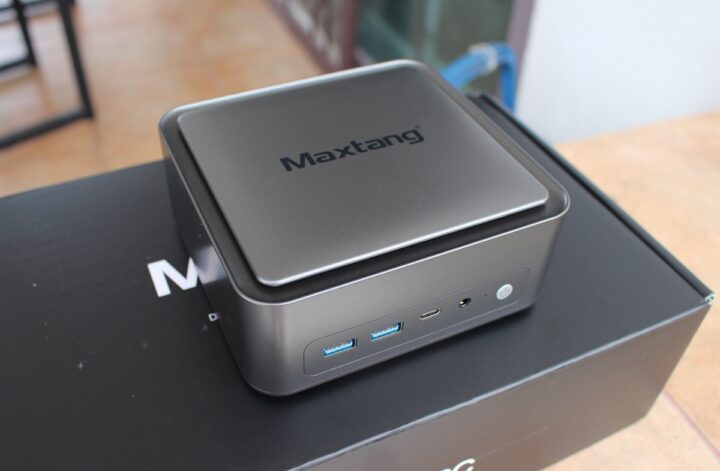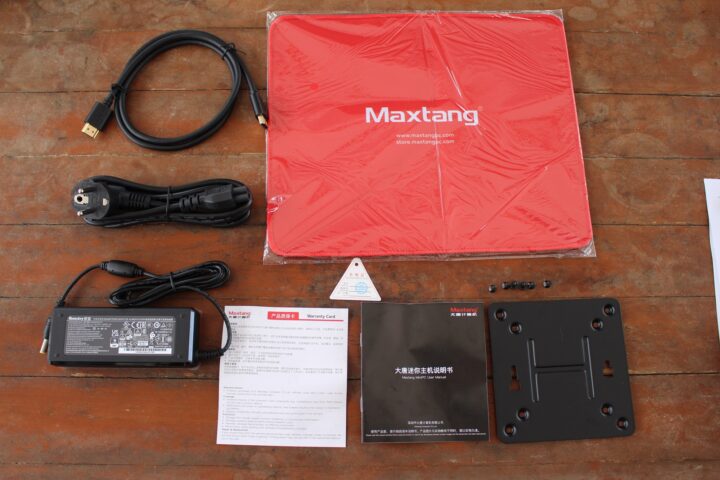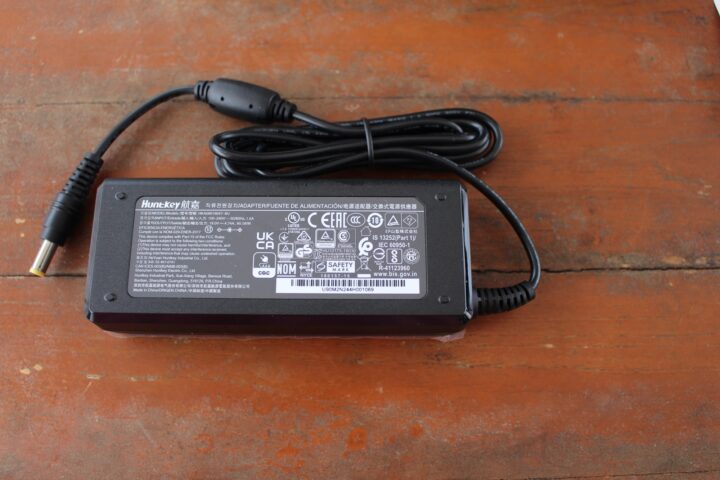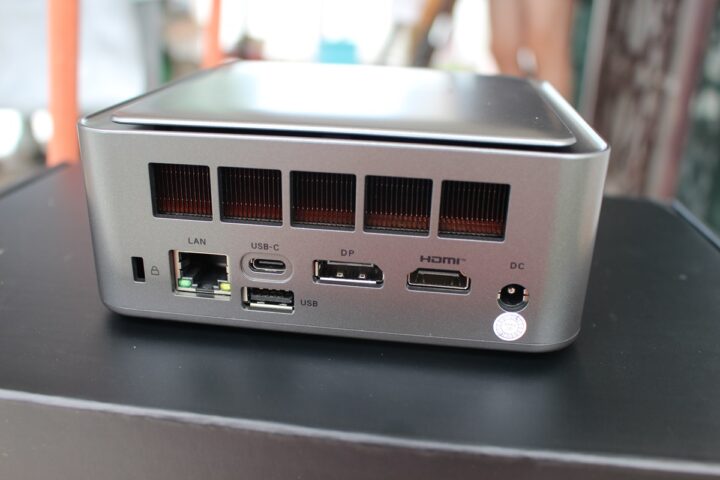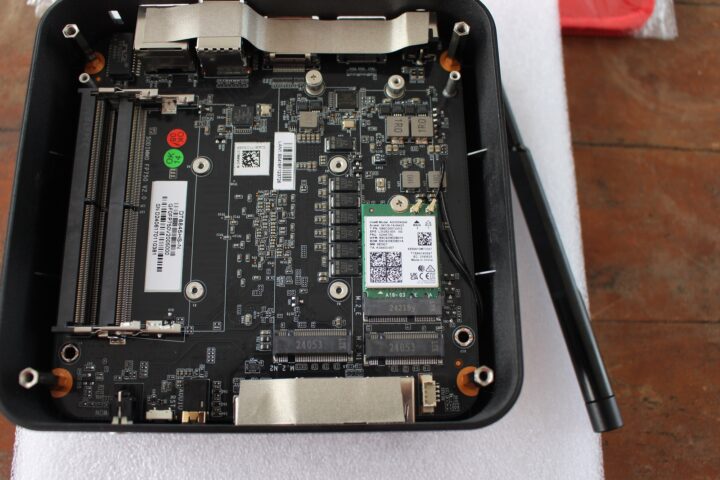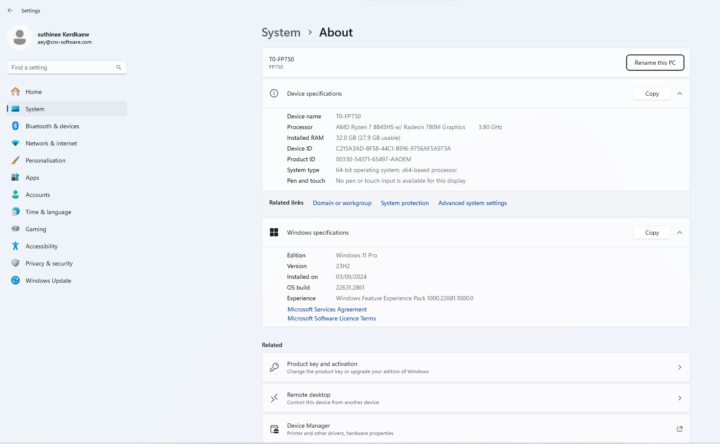Maxtang T0-FP750 is a mini PC powered by an AMD Ryzen 7 8845HS octa-core/sixteen-thread SoC supporting up to 64GB 5600 MT/s dual-channel DDR5 SO-DIMM memory, equipped with two M.2 slots for up to NVMe 2280 SSDs, and an additional M.2 slot for a WiFi 6E and Bluetooth 5.2 module. The Windows 11 Pro mini computer can drive up to three displays via HDMI 2.0, USB4, and DisplayPort 1.4 connectors and offers 2.5GbE networking.
Maxtang sent us a review sample of the T0-FP750 mini PC with 32GB DDR5 RAM, a 512GB M.2 SSD, and a WiFi 6E and Bluetooth 5.2 wireless module. Despite having a similar name to the earlier AMD Ryzen 7 7735HS-powered Maxtang MTN-FP750 mini PC reviewed last December, the T0-FP750 design is fairly different as we’ll see below. As usual, we’ll do a three-part review starting with the specifications, an unboxing, a teardown, and a quick first try today, before checking out the mini PC in more detail with Windows 11 Pro and Ubuntu 24.04.1 in the next two parts.
Maxtang T0-FP750 specifications
- SoC – AMD Ryzen Ryzen 7 8845HS 8-core/16-thread processor up to 5.1 GHz with 16MB cache, AMD Radeon 780M Graphics; TDP: 45W
- System Memory – Up to 64GB dual-channel DDR5 5600MT/s via 2x SO-DIMM sockets
- Storage – 2x M.2 sockets for M.2 2280 NVMe SSD
- Video Output
- HDMI 2.0 up to 4K @ 60Hz
- USB4 DisplayPort up to 8K @ 30Hz
- DisplayPort 1.4 up to 8K @ 60Hz
- Support for 3x independent displays
- Audio – 2-in-1 3.5mm audio jack with Line-out and Mic-in
- Networking
- 2.5GbE RJ45 port
- WiFi 6E and Bluetooth 5.2 module
- USB
- 2x USB 3.2 Type-A ports
- 1x USB 3.2 Type-C port
- 1x USB4 port
- 1x USB 2.0 Type-A port
- Expansion – M.2 socket (PCIe and USB) for wireless module
- Misc – Power button, Kensington lock slot, BIOS reset port, cooling fan
- Power Supply –19V/20V DC-in
- Dimensions – 127 x 135 x 55 mm
- Temperature Range
- Operating – 0°C – 50°C
- Storage – -20°C – 70°C
Unboxing
We received the mini PC in a Maxtang-branded black package with limited information.
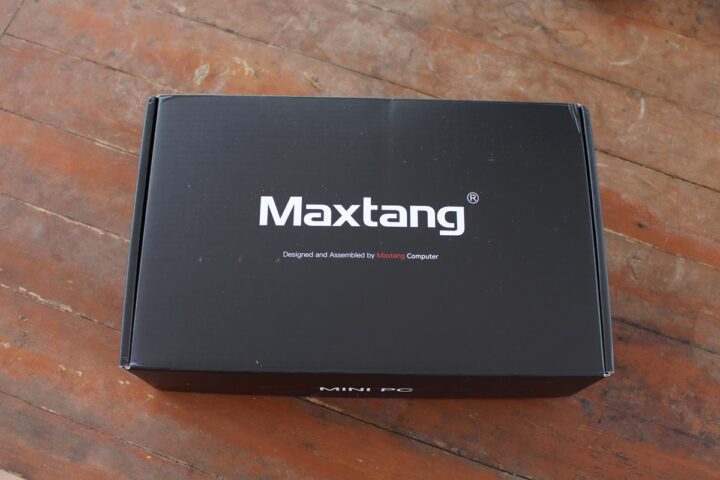
The important part is the sticker showing you’ve received the MTN-8845HS model (but sold as T0-FP750 instead) with an AMD 8845HS CPI, two 16GB RAM sticks, and a 512GB SSD. “OP11” must refer to the Windows 11 operating system.
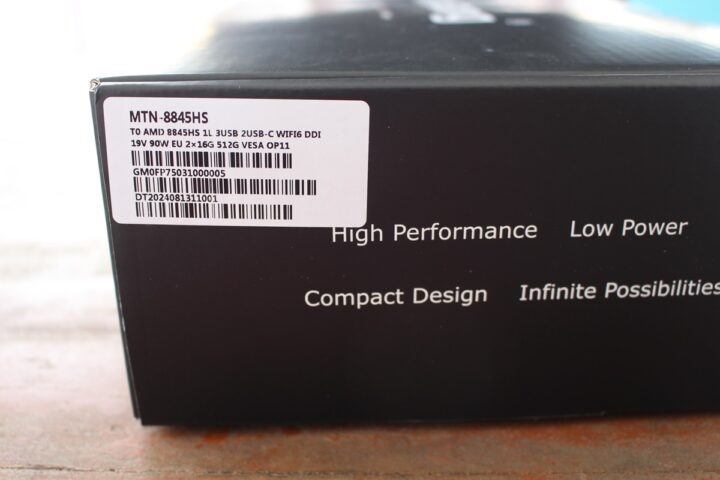
Let’s open the box and see what’s inside. The Maxtang T0-FP750 mini PC comes out first. The design is slightly different and smaller than the FP750 model, but still larger than most competing AMD Ryzen mini PCs.
The package also includes a 19V/4.74A (90W) power adapter, a power cord, an HDMI cable, a user manual in Chinese and English, a warranty card, a VESA mount, a screw set, and a red mouse mat.
The front panel features two USB 3.2 Type-A ports, a USB 3.2 Type-C port, a 3.5mm audio jack, a BIOS reset pinhole, and a power button. Those are the same ports as on the FP750, but with a different port arrangement.
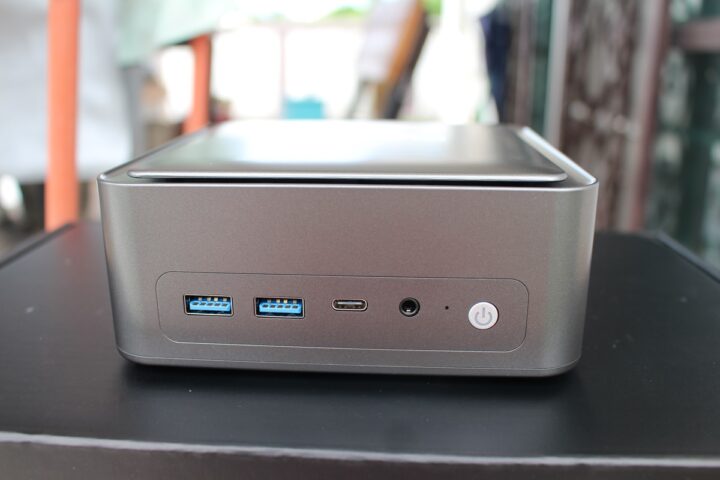
The rear panel has some ventilation holes on top, and under these, we’ll find a Kensington lock slot, a 2.5GbE jack, a USB4 port, a USB 2.0 Type-A port, a DisplayPort 1.4 connector, an HDMI 2.0 port, and the DC jack. The rear panel is quite different from the FP750 which came with two HDMI ports and a USB-C port for video output, and a completely different port arrangement.

Maxtang T0-FP750 teardown
Now let’s open the case to check the hardware design. We’ll need to take out the four rubber pads on the bottom side of the mini PC and loosen the four screws underneath to get access to the motherboard.
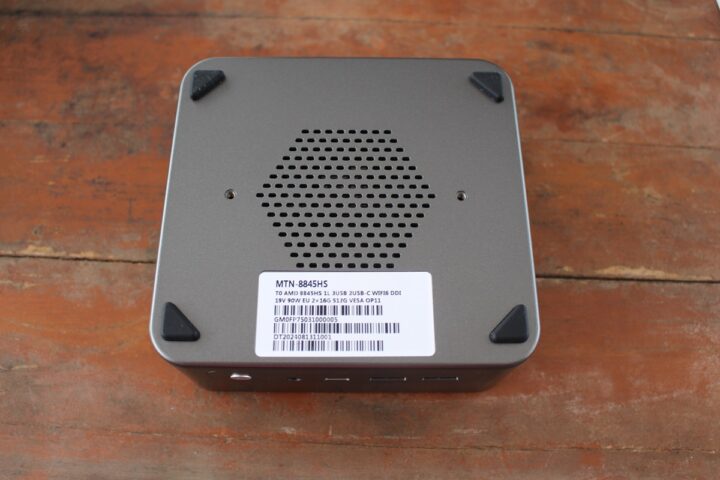
The mini PC comes with two Crucial memory sticks, an NVMe SSD with a heatsink and a thermal pad for cooling, and we can also see a spare M.2 socket for an additional NVMe SSD or AI accelerator.
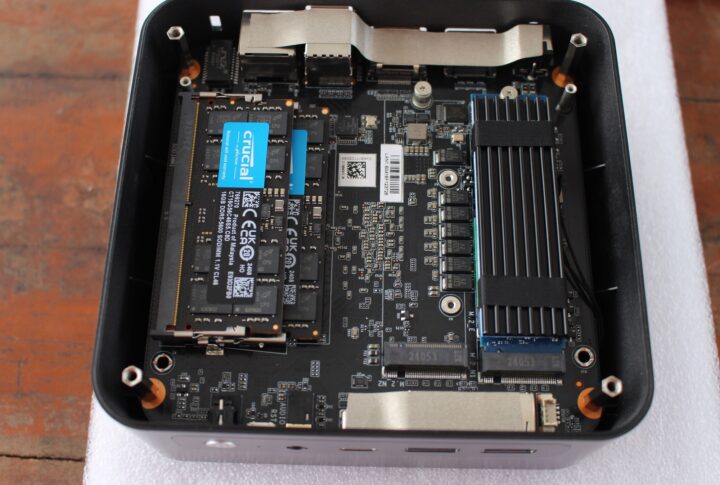
We took out the memory sticks (2x 16GB Crucial CT16G56C46S5 DDR5-5600) and SSD to have a better look at the motherboard and find the wireless module installed underneath the SSD.
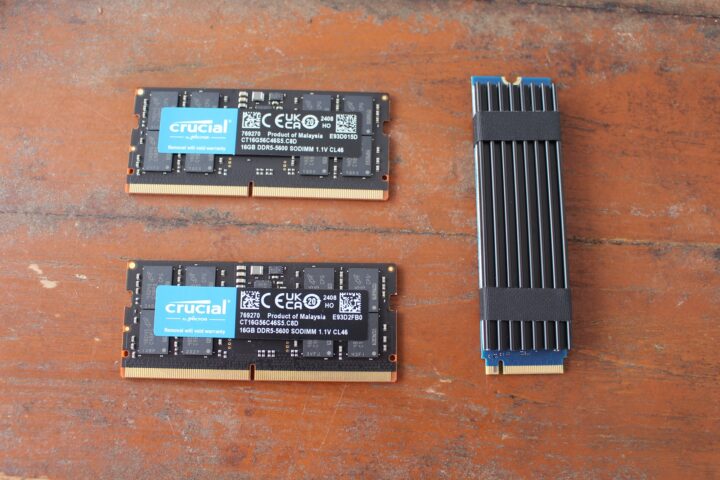
The wireless module is an Intel AX200NGW WiFi 6 and Bluetooth 5.2 module which should work fine with both Windows 11 and Ubuntu 24.04.
First boot with Windows 11 Pro
We connected a Raspberry Pi mouse, a Raspberry Pi keyboard, and an HDMI monitor (Kamvas Pro 16 (2.5K)) to the mini PC, and after connecting the power supply, we went through the usual Windows 11 setup wizard and were soon in the Windows desktop with Internet access over WiFi.
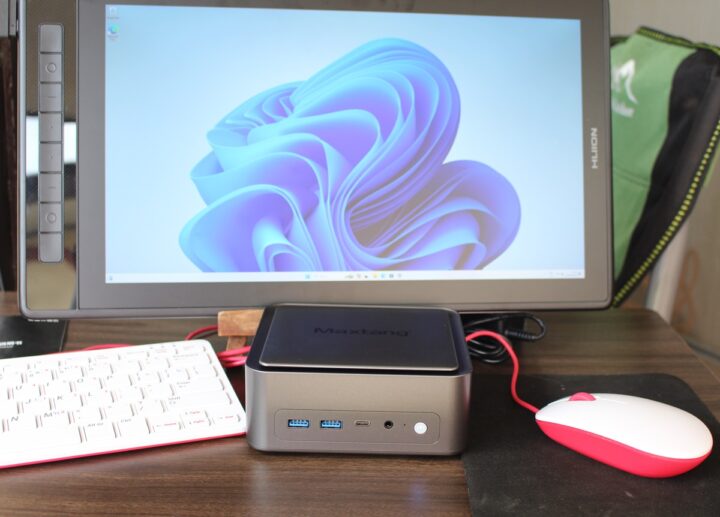
The System->About window confirms we have an “FP750” mini PC powered by an “AMD Ryzen 7 8845HS w/ Radeon 780M Graphics” processor whose CPU cores are clocked at 3.80 GHz (base frequency), equipped with 32GB RAM, and running Windows 11 Pro 23H2.
While we haven’t tested the F0-FP750 in detail yet, we can already report a big improvement as the fan is quiet and barely audible at idle, while the Maxtang MTN-FP750 was noisy all the time, and much more than competing products. That will be all for today, we’ll test the Maxtang T0-FP750 mini PC on Windows 11 Pro and Ubuntu 24.04.1 in the next parts of the review.
We’d like to thank Maxtang for sending the T0-FP750 mini PC for review with an AMD Ryzen 7 8845HS CPU, 32GB DDR5 RAM, and a 512GB M.2 SSD. It can be ordered on Amazon for $584.10 in this configuration after ticking on the 10% off coupon. Alternatively, you can purchase it on the company’s store for $549 when using the coupon code CNX80 for an $80 discount.
Continue reading
- Maxtang T0-FP750 review – Part 2: An AMD Ryzen 7 8845HS mini PC tested with Windows 11 Pro.
- Maxtang T0-FP750 Review – Part 3: Ubuntu 24.04.1 (coming soon)
CNXSoft: This review is a translation – with some additional insights – of the article on CNX Software Thailand by Suthinee Kerdkaew.

Jean-Luc started CNX Software in 2010 as a part-time endeavor, before quitting his job as a software engineering manager, and starting to write daily news, and reviews full time later in 2011.
Support CNX Software! Donate via cryptocurrencies, become a Patron on Patreon, or purchase goods on Amazon or Aliexpress


